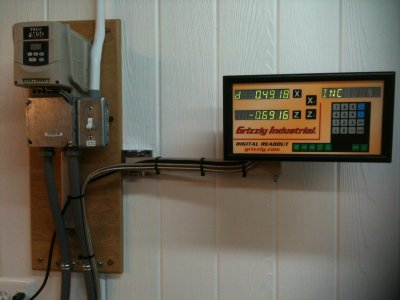You really don't want to go that route - if you need to kill power to the VFD you'll be running to the power panel.
It's not hard to install a 220V outlet or have one installed - run it in the wall or in conduit if you have to.
Once you've got an outlet near the mill you just buy a matching plug and a few feet of cord from an electrical supply - total cost for plug/cord is less than $5. It takes 5 minutes to hook the cord to the plug and the cord to the VFD and then it's done right and if you did have an emergency -
say you somehow messed up a simple operation by forgetting to tighten something, and big hunks of metal were suddenly spinning around as a two ton machine started dancing across the floor and you found yourself lowcrawling across that samee floor for the exit, you could just reach up and yank that cord rather than trying to sprint across the workshop to the panel before getting crushed like Wiley Coyote under the falling safe....
And yes, it happened to me. On the lathe. There's a blow-by-blow description somewhere on this forum....
Joe
It's not hard to install a 220V outlet or have one installed - run it in the wall or in conduit if you have to.
Once you've got an outlet near the mill you just buy a matching plug and a few feet of cord from an electrical supply - total cost for plug/cord is less than $5. It takes 5 minutes to hook the cord to the plug and the cord to the VFD and then it's done right and if you did have an emergency -
say you somehow messed up a simple operation by forgetting to tighten something, and big hunks of metal were suddenly spinning around as a two ton machine started dancing across the floor and you found yourself lowcrawling across that samee floor for the exit, you could just reach up and yank that cord rather than trying to sprint across the workshop to the panel before getting crushed like Wiley Coyote under the falling safe....
And yes, it happened to me. On the lathe. There's a blow-by-blow description somewhere on this forum....
Joe


